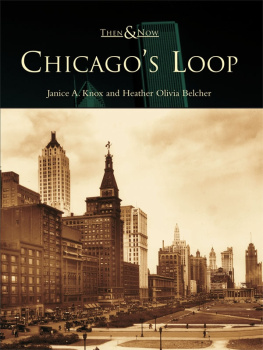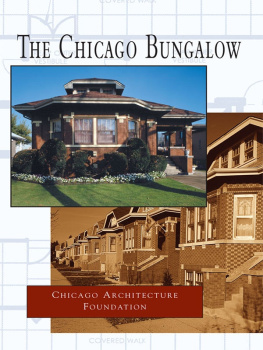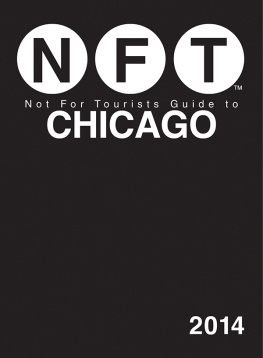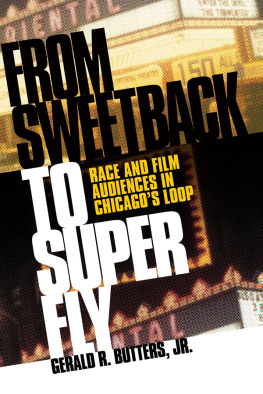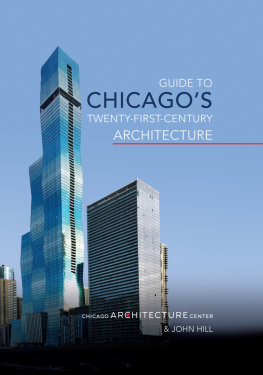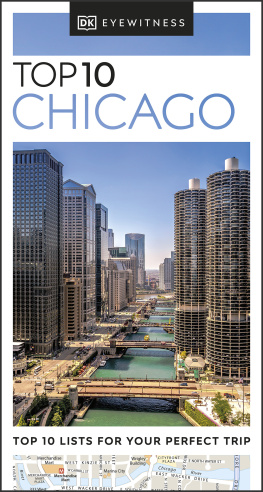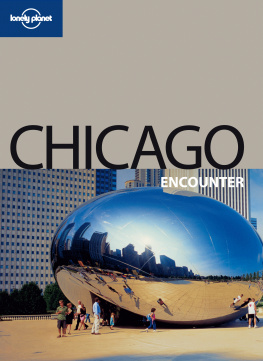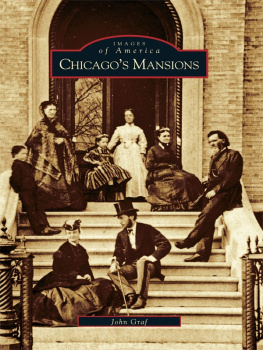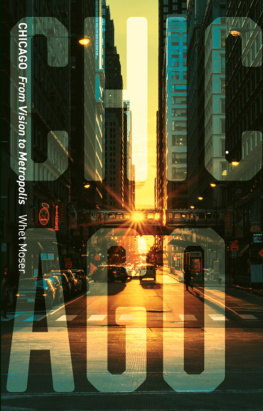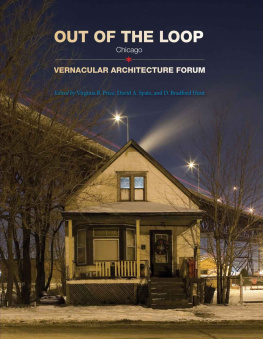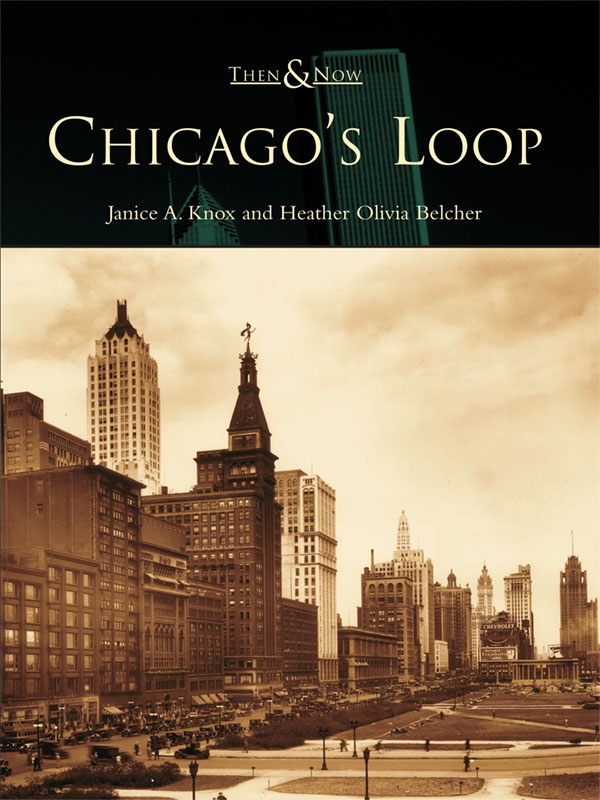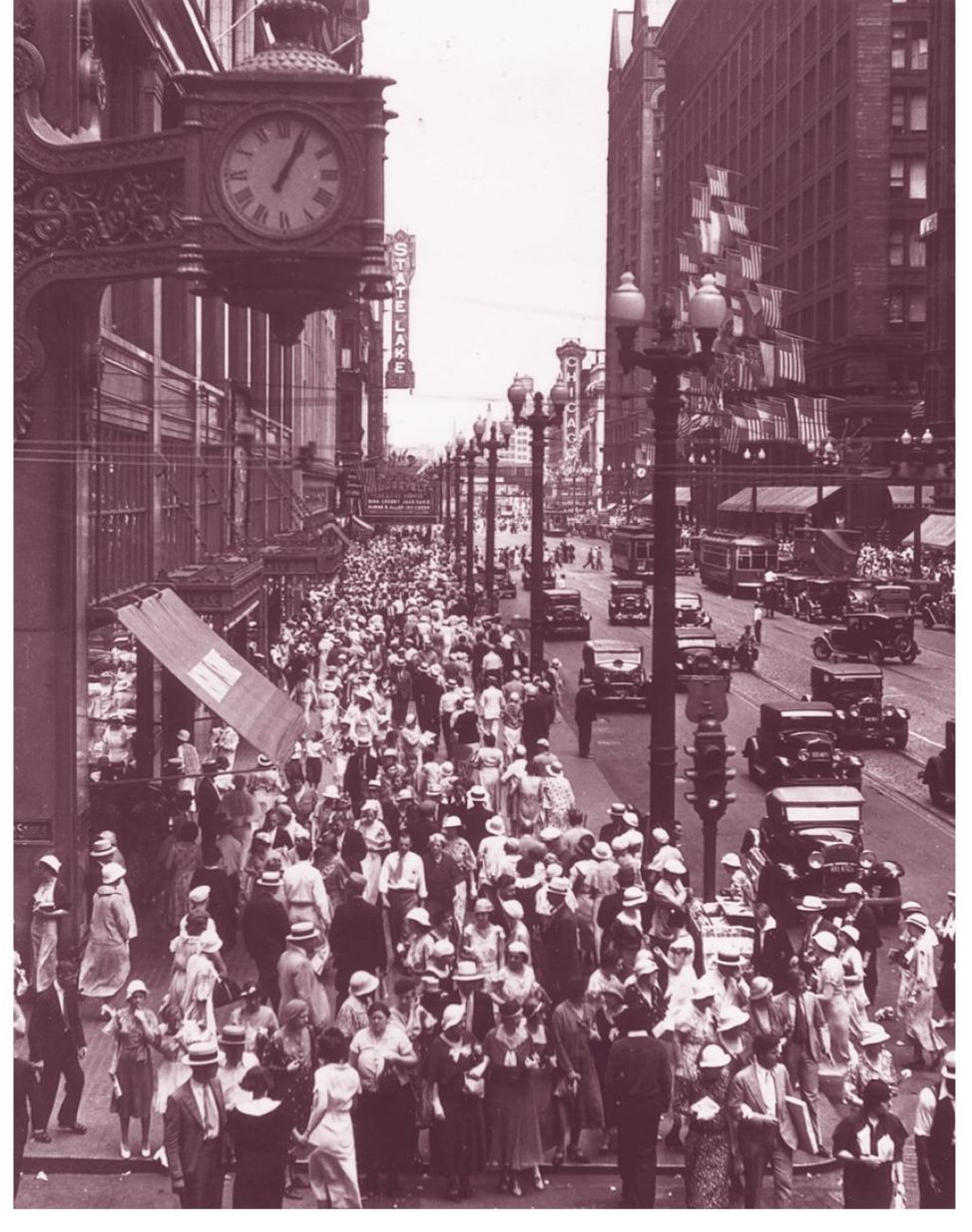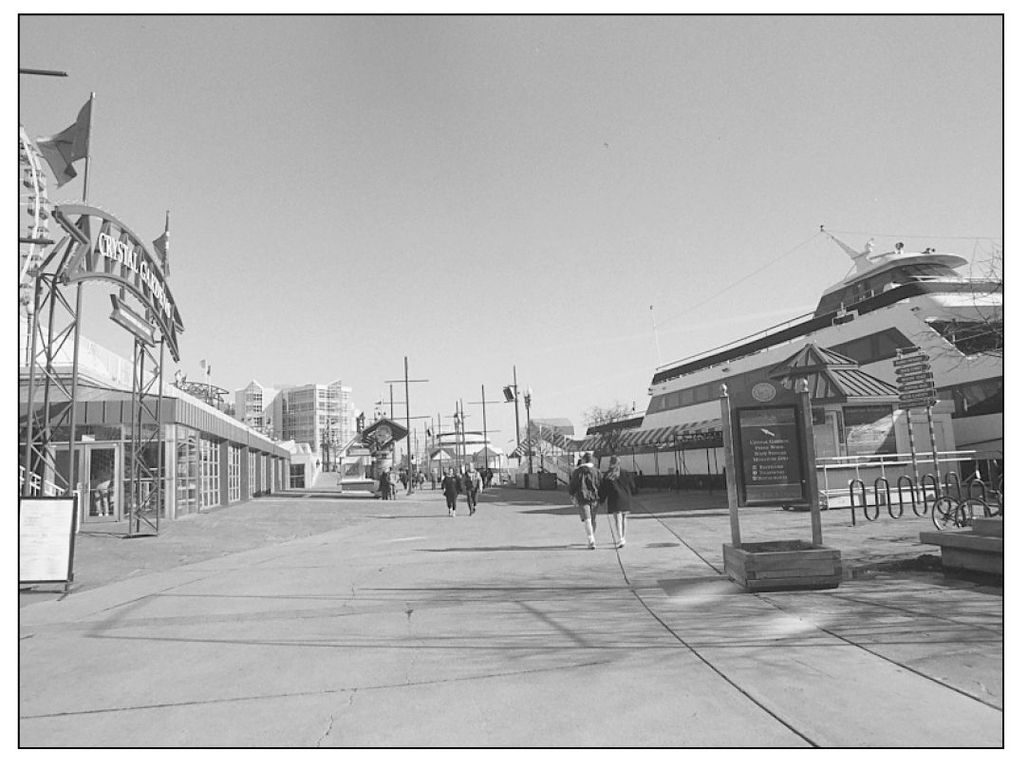Acknowledgments
STATE STREET NORTH FROM MADISON AVENUE, 1933.
(Courtesy of the University of Illinois at Chicago.)
There are a number of people who provided support and encouragement during the production of this book, and much appreciation and gratitude goes out to these individuals. Patricia Bakunas, Zita Stukas, Carmen Deleon, and Mary Diaz, Special Collections Staff at the University of Illinois at Chicago, provided tremendous support in helping us to navigate and obtain permission to use the many historic photographs from the Chicago Photographic Collection. The full credit line for these photographs appears below. A special thanks goes out to Robert Sandla, Editor-in-Chief of Stagebill, who graciously allowed us to use advertisements from past Stagebill publications. Tom Yanul, photographer, provided great photographs of the opening day of the new financial futures floor at the Chicago Board of Trade. Samantha Gleisten and Julia Knippen, Arcadia Publishing, provided ongoing encouragement and support. Attorneys James Montgomery and Len Rubin should also be noted for their encouragement and guidance. We are also grateful to our friend, Patricia Robinson, who continues to keep us in her prayers and has provided encouragement, support, and friendship. Lastly, we are dedicating this book to our parents/grandparents, Lucy Olivia Knox and James W. Knox for their understanding, love, and encouragement, and to Betty J. Rutherford, sister and aunt, who is now in heaven, but her love of family and her laughter will always remain with us.
Special Note from Janice A. Knox: Much appreciation and love goes out to my daughter, the co-author Heather Olivia Belcher, who gave up many of her weekends and free time to photograph all of the contemporary views (except for the CBOT photograph noted above), and for being a good friend.
Note: Images from Chicago Photographic Collection, Department of Special Collections, The University Library, University of Illinois at Chicago.
Find more books like this at
www.imagesofamerica.com
Search for your hometown history, your old stomping grounds, and even your favorite sports team.
Chapter 1
CHICAGOS FRONT YARD
SOLDIER FIELD, 1929. This aerial photo of Soldier Field and the Field Museum was taken in 1929 with the skyline of the Chicago Loop and Grant Park in the background. Were it not for the actions of retailer and property-owner, Aaron Montgomery Ward, the city of Chicago would not be able to maintain the open park space of Grant Park (formerly known as Lake Park prior to 1901). Soldier Field is home to the Chicago Bears (football) and the Chicago Fire (soccer) teams. The 100-foot Doric columns with tetra style temples give Soldier Field the look of a coliseum in Ancient Rome. Built in 1924 by Holabird and Roche, the field was originally called the Grant Park Stadium, but was later renamed to honor the fallen World War I soldiers. Originally built as a U-shaped structure as seen below, the stadiums northern end was closed in during the construction of the Chicago Park District Administrative Building, completed in 1939. This building was demolished in 2001 in preparation for the controversial plan to renovate Soldier Field by building a new stadium within and above the outer faade of the current field, changes which may threaten its National Historic Landmark status. (Courtesy of the University of Illinois at Chicago.)
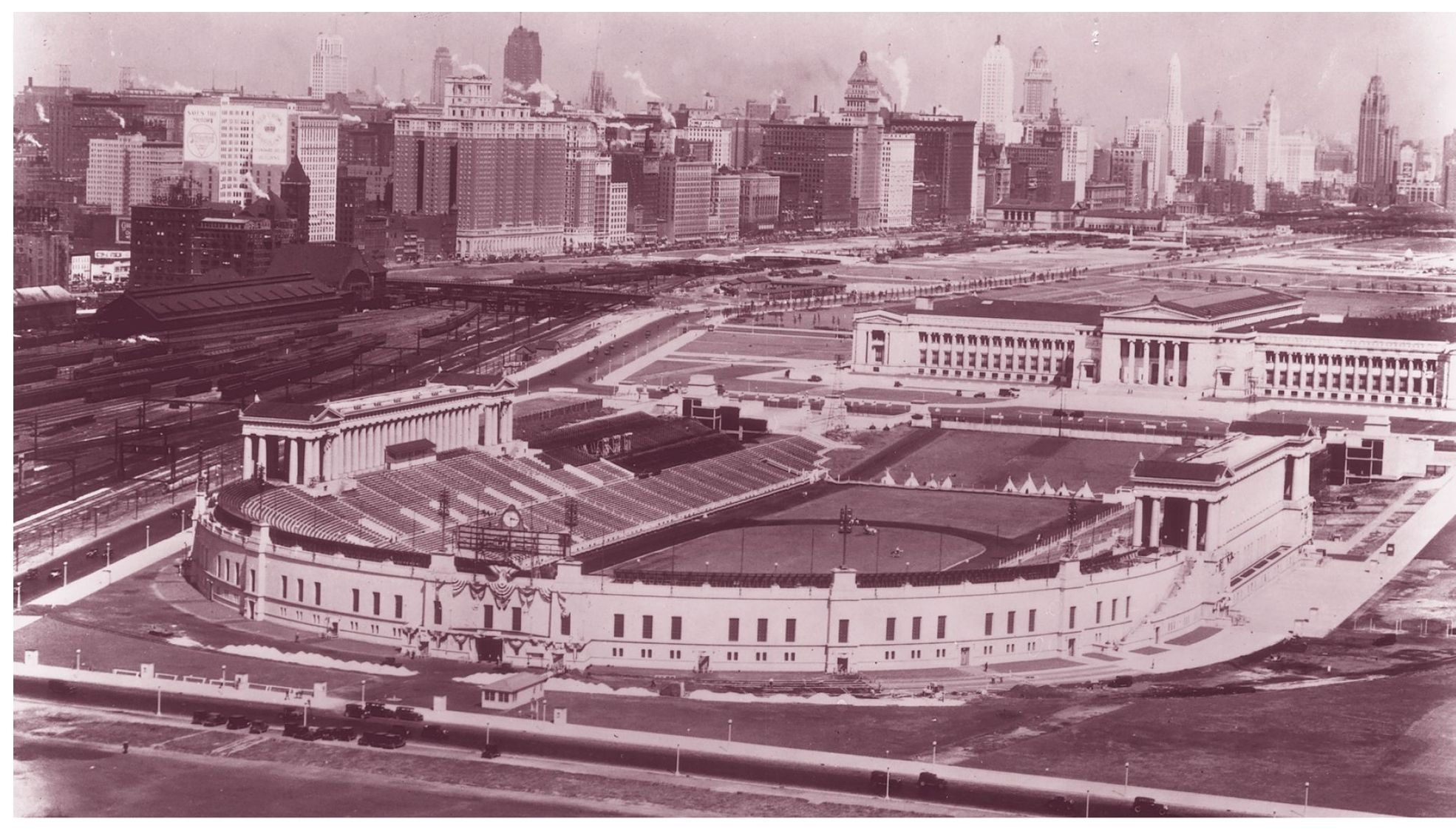

CHICAGO SKYLINE, C . 1940 & 2002 . The famous Chicago skyline has retained its distinctive look over the years, gracefully blending old and new architecture. (Postcard Private Collection, Photo by Heather Olivia Belcher.)
CLARENCE BUCKINGHAM FOUNTAIN, 1955 & 2002. The fountain is one of the many symbols of Chicago, and is located in Grant Park at Congress Street. Kate Buckingham (18581937) donated the fountain in 1927 as a $750,000 gift to the city of Chicago in memory of her brother, Clarence Buckingham (18541913), a former director of the Art Institute of Chicago. The fountain, modeled after the Latonia Fountain in the garden of Versailles in France, was built by Bennett, Parsons, and Frost from Chicago, and Marcel Francois Loyau and Jacques Lambert from Paris. Oneand-a-half million gallons of water are re-circulated through 133 jets, at approximately 14,000 gallons a minute. During summer nights, a spectacular color light show is performed. Originally, the fountain was operated manually, but is now computer operated. In 1994, there was a restoration of the fountain, and it continues to be a favorite place to visit. (1955 Photo Courtesy of the University of Illinois at Chicago, 2002 Photo by Heather Olivia Belcher.)
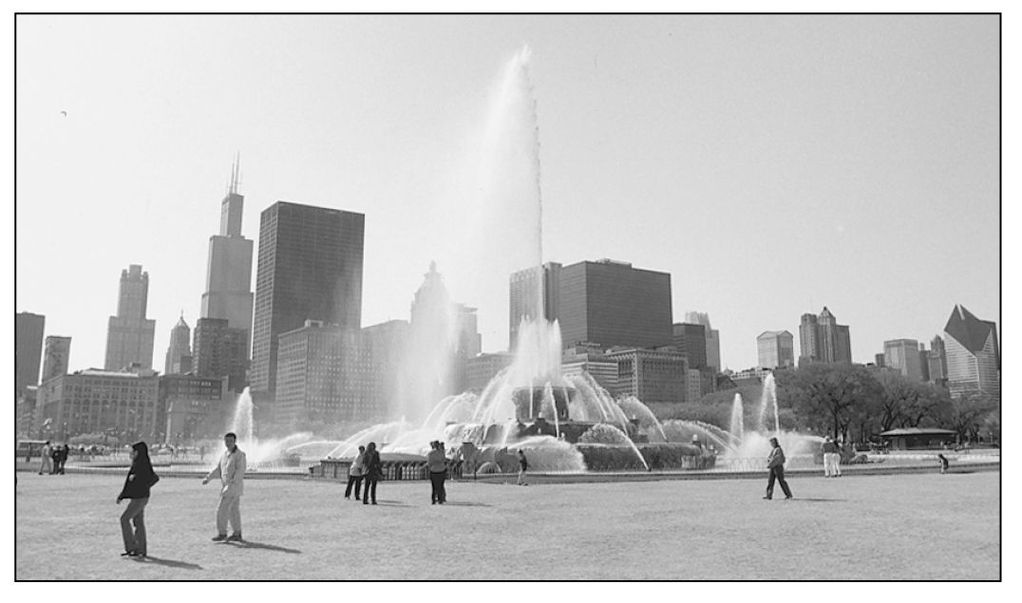
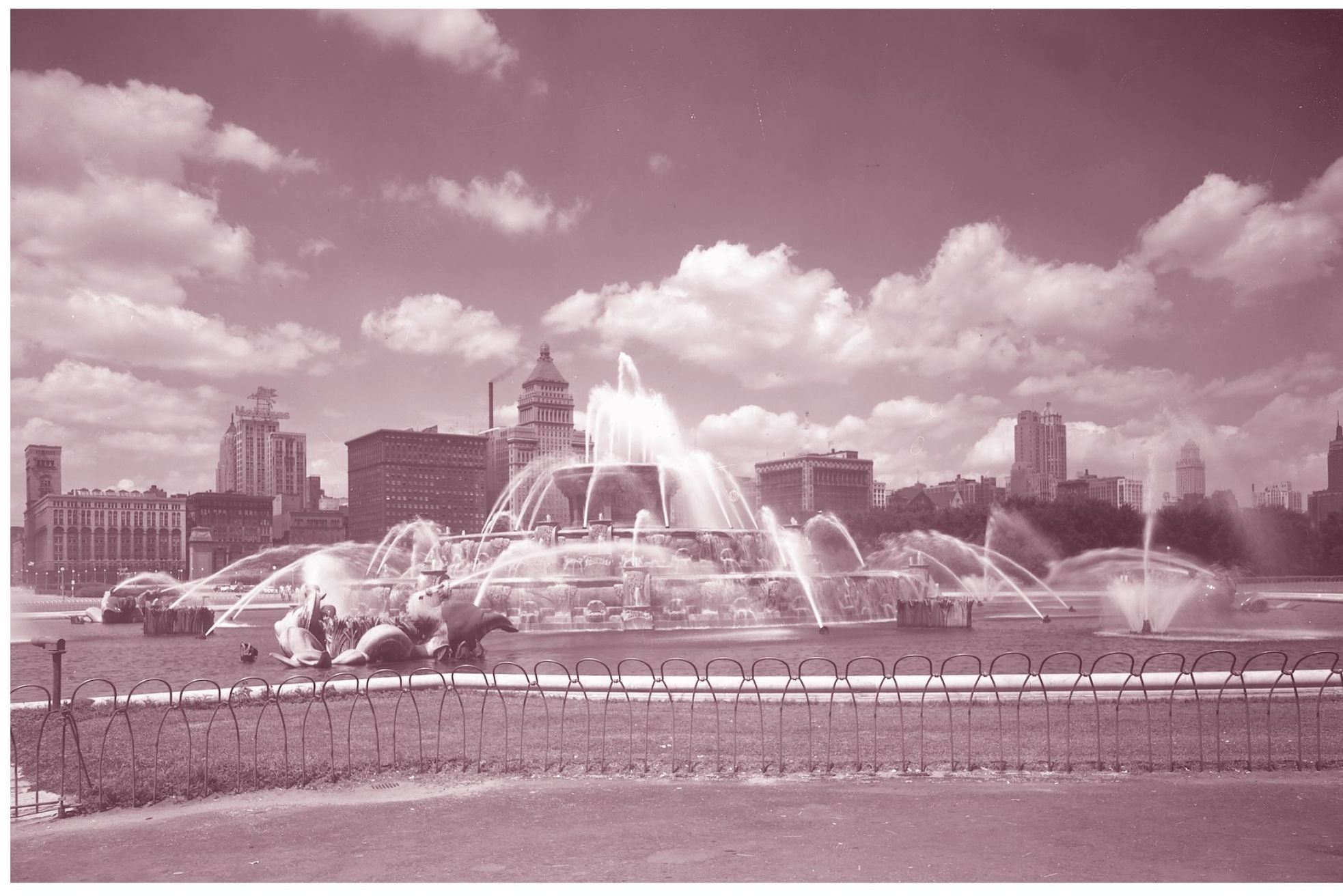
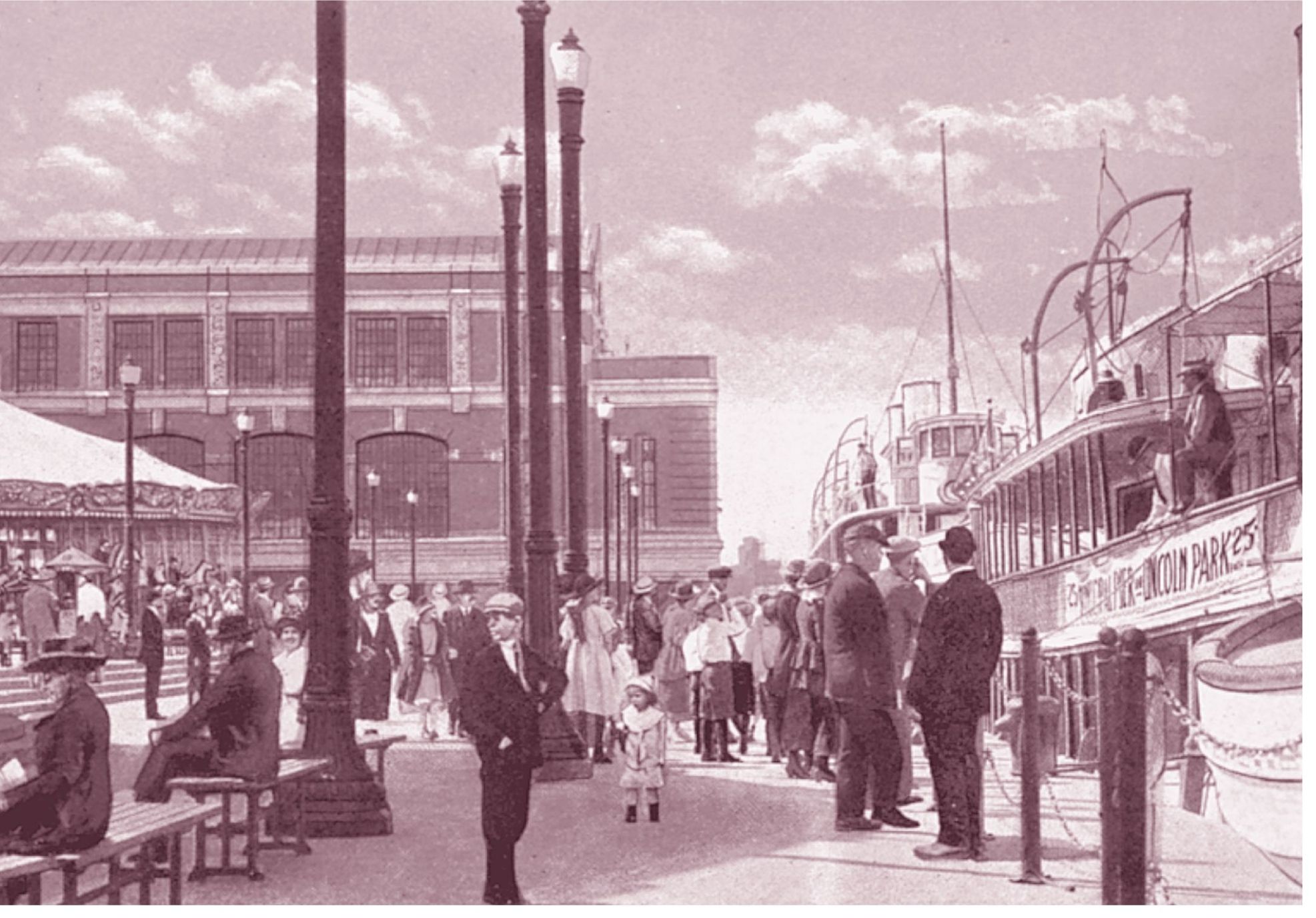
MUNICIPAL PIER EXCURSION BOATS, C . 1920, NAVY PIER EXCURSION BOATS, 2002. In the 1920s, the cost of boat rides from the pier to Lincoln Park was a mere 25. Today, the cost is around $40, including lunch. Boats could also be taken from the pier to Jackson Park on the south side. The pier, which Charles S. Frost completed in 1916, was similar to the one that Burnham had planned in his 1909 Plan of Chicago. However, the pier in Burnhams Plan would have been constructed in Grant Park. (Postcard Private Collection, Photo by Heather Olivia Belcher.)
NAVY PIER, 1939 & 2002. One of the favorite places to visit in Chicago, Navy Pier was built as Municipal Pier No. 2 in 1916. Pier No. 1 was never built. Located at 600 East Grand Avenue at the lakefront, the 3,000-foot-long pier was built to provide ships with docking facilities for freight vessels and excursion steamers, warehouses, and public recreational facilities. At the time it was built, it was considered the worlds longest pier. Due to the Great Depression and increased transportation advances, its usefulness started to decline. The U.S. Navy converted the pier to a training facility and changed the name to Navy Pier. The University of Illinois purchased the pier in 1946 to use as their Chicago Branch. In 1989, the City of Chicago established the Metropolitan Pier & Exposition Authority to oversee the renovation of the pier to be used as a recreational and cultural center. A 150-foot Ferris wheel, shops, theaters, museum, restaurants, and more continue to attract visitors year-round. (Postcard Private Collection, Photo by Heather Olivia Belcher.)

